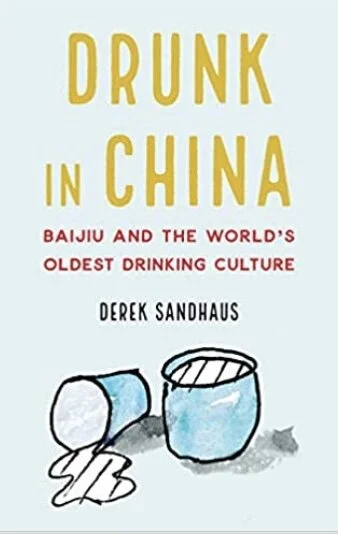Drunk in China by Derek Sandhaus (Potomac Books)
After swallowing his first sip of baijiu in his introductory days as an American expat in China, Derek Sandhaus finds himself choking, gasping, worrying about potential blindness and brain damage, while threatening to “consult a war crimes tribunal.” But baijiu is an integral part of Chinese business, social, and political life. Sandhaus quickly learns he won’t achieve any sort of success in his new country without learning how to stomach its most popular variety of liquor.
Baiju is an acquired taste that at first presents challenges to the most seasoned drinker; Chinese friends tell Sandhaus he’ll have to drink at least three hundred glasses before he’ll begin to enjoy the experience. A quick learner, he rapidly achieves that pinnacle after a mere seventy tipples. Soon his newly acquired affinity leads him to explore the culture and history of baijiu in a rollicking, hard-drinking odyssey that takes him across China .
Nine thousand years ago, Neolithic Chinese created “the world’s oldest alcoholic beverage,” a rice-based form of homebrewed beer that rapidly became a household staple. With the Qin empire came grain alcohol which the Emperor wisely decided to tax, thereby providing a hefty source of government revenue. Under his encouragement, a more sophisticated form of alcohol production and consumption spread across China.
Later, influenced by Mongolia’s fermented mare’s milk, distilled grain alcohol began production in China and drinking baijiu, cheap, strong, and made from sorghum, became the national pastime. Today it accounts for roughly 90% of China’s liquor sales and is the bestseller among all the world’s liquors. Almost 3.4 billion gallons are produced annually, with their strengths ranging from 52 to 140 proof.
Until recently baijiu figured heavily in corruption scandals. “The Chinese government’s annual liquor tab for lavish banquets reached 600 billion yuan ($94.5 billion USD),” in 2011, “roughly three times that year’s stated national defense budget.” On a lower level, bribes were sweetened with bottles of baiju that could cost up to $200 USD. When Xi Jinping’s anti-corruption campaign began, baijiu sales plummeted.
Globalization has also taken its toll on baijiu’s popularity. Foreign liquors have become fashionable with the affluent new generation in China, especially among the young women who have broken tradition by having a drink themselves and who, perhaps wisely, have turned away from the incendiary properties of baijiu. Hoping new markets will restore their booming and profitable sales of the recent past, baiju manufacturers are going international, with the target of conquering elegant bars around the world.
To assist with that goal, Sandhaus has cofounded a new baiju label, Ming River Sichuan Baijiu, that’s been distilled with Western palates in mind, edits DrinkBaijiu.com, and has sprinkled enticing recipes for homemade baijiu cocktails throughout the pages of Drunk in China.
Who knows? Sake and mezcal have risen from obscurity to become staples in almost every bar on the planet. Why can’t baijiu achieve that same popularity among the trendy--and intrepid--drinkers of the world? ~Janet Brown
